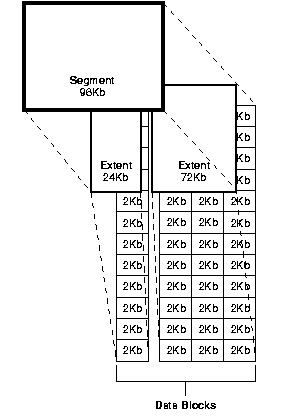Oracle Database - (Data|Db|Logical|Oracle) Block or Page
About
Articles which talk about:
- block management.
At the finest level of granularity in the logical structure of an Oracle Database, the data is stored in data blocks.
The data block sizes should be a multiple of the operating system's block size.
One data block corresponds to a specific number of bytes of physical database space on disk.
The standard block size is specified by the DB_BLOCK_SIZE initialization parameter. A common block size is 8k. In addition, you can specify up to four other block sizes. A database uses and allocates free database space in Oracle Database data blocks.
A block is also see as:
- the individual rows,
- the set of rows for each possible transaction on the block,
- the entire set of rows in the block.
If you had 200,000 rows in a table, deleted half of them, then the table would still 'own' the same number of blocks. See Oracle Database - High Water Mark (HWM) - boundary between used and unused space
Articles Related
Retrieval of block
Blocks may be retrieved and used by the database in one of two ways :
- current
- or consistent
A query will generally perform “Oracle Database - Consistent (Read get|Buffer Mode) (CR)” and the term logical I/O refer often to it.
Current get
A current mode get is a retrieval of a block as it exists right now. You will see these most frequently during modification statement, which must update only the latest copy of the block.
Statistic : Oracle Database - (Db Block Get|Current Get) Buffer Mode (CU)
Consistent get
Consistent gets are the retrieval of blocks from the buffer_cache in “read consistent” mode and may include read asides to UNDO (rollback segments).
Statistic : Oracle Database - Consistent (Read get|Buffer Mode) (CR)
